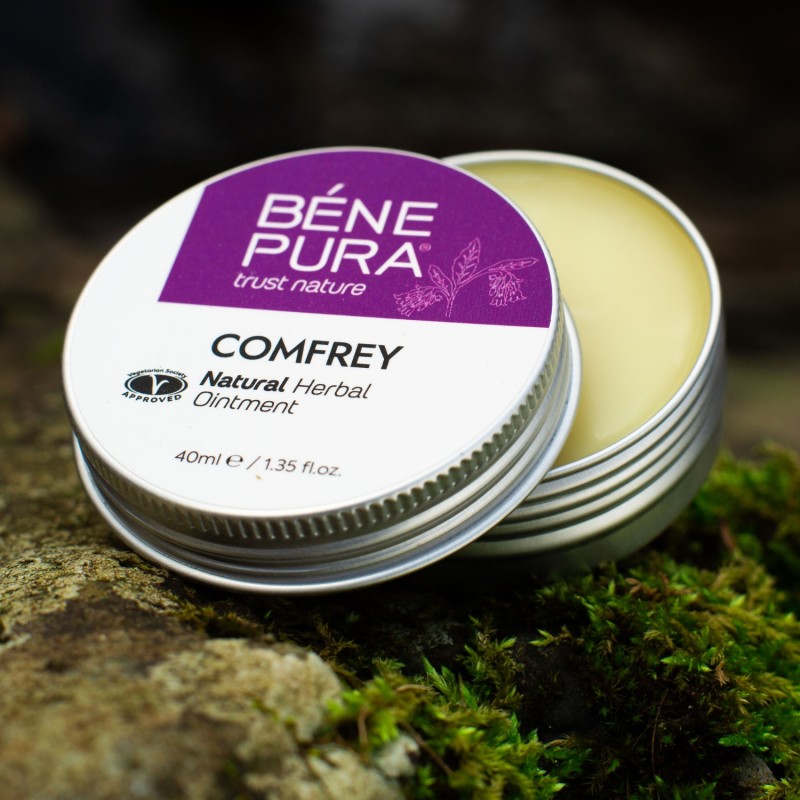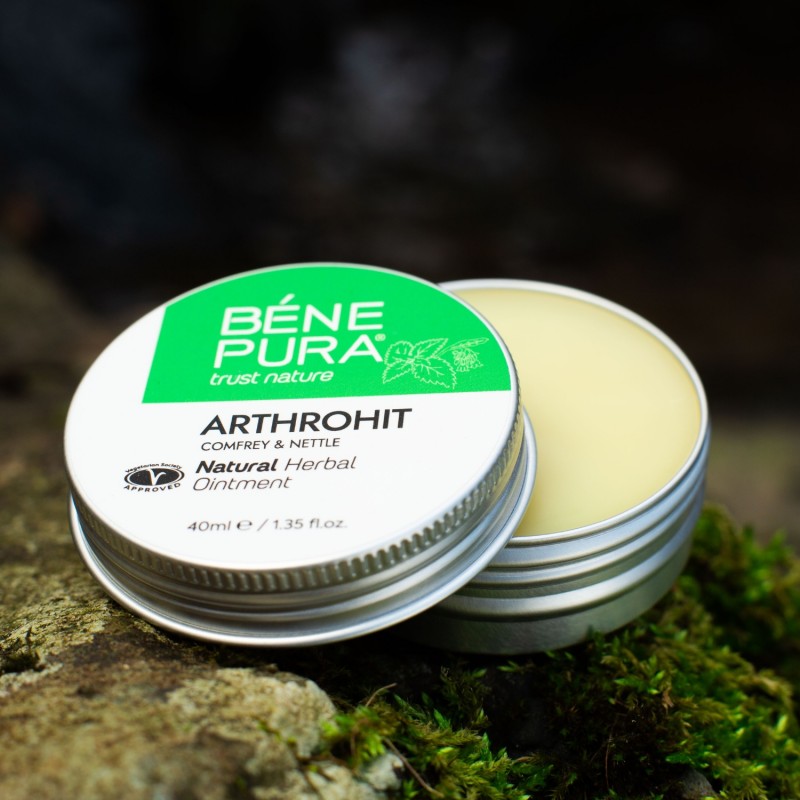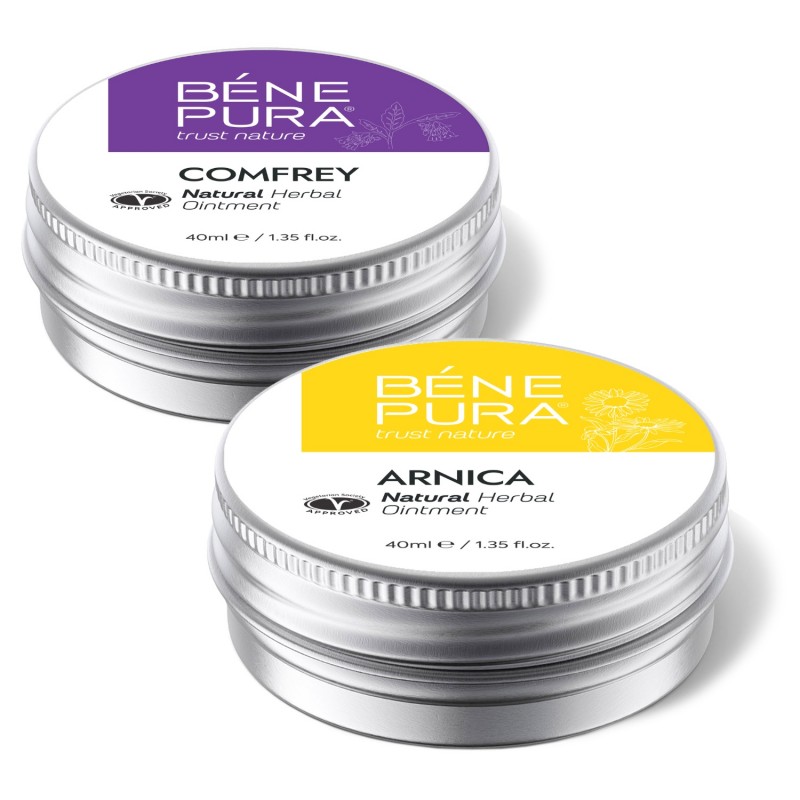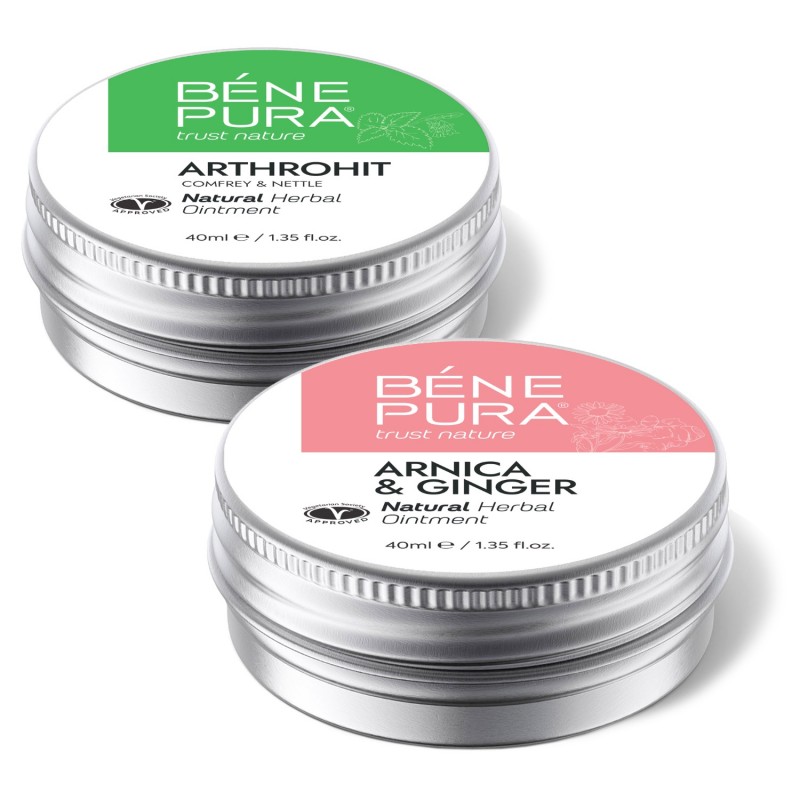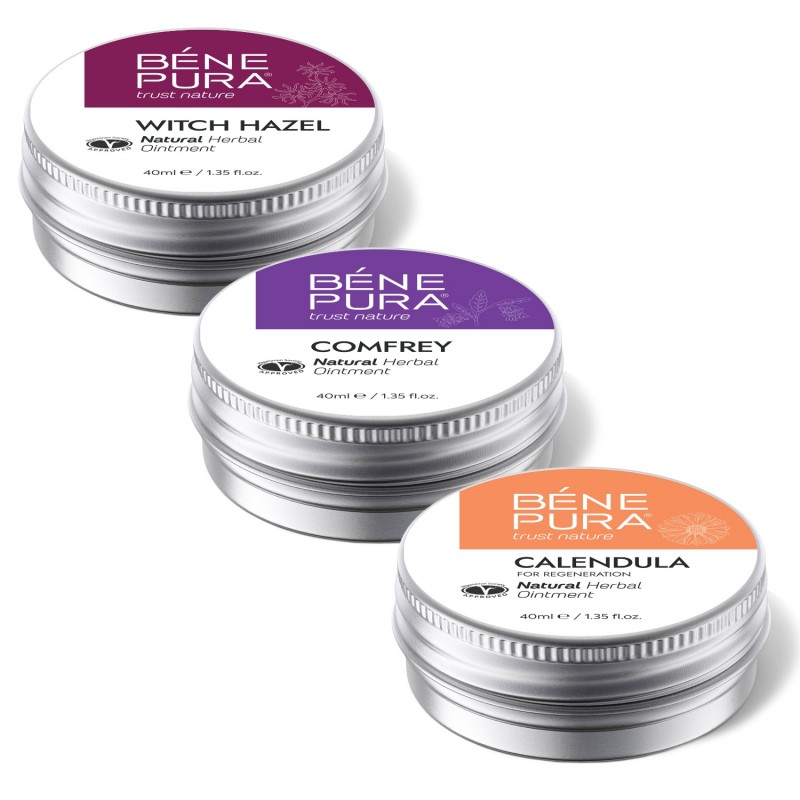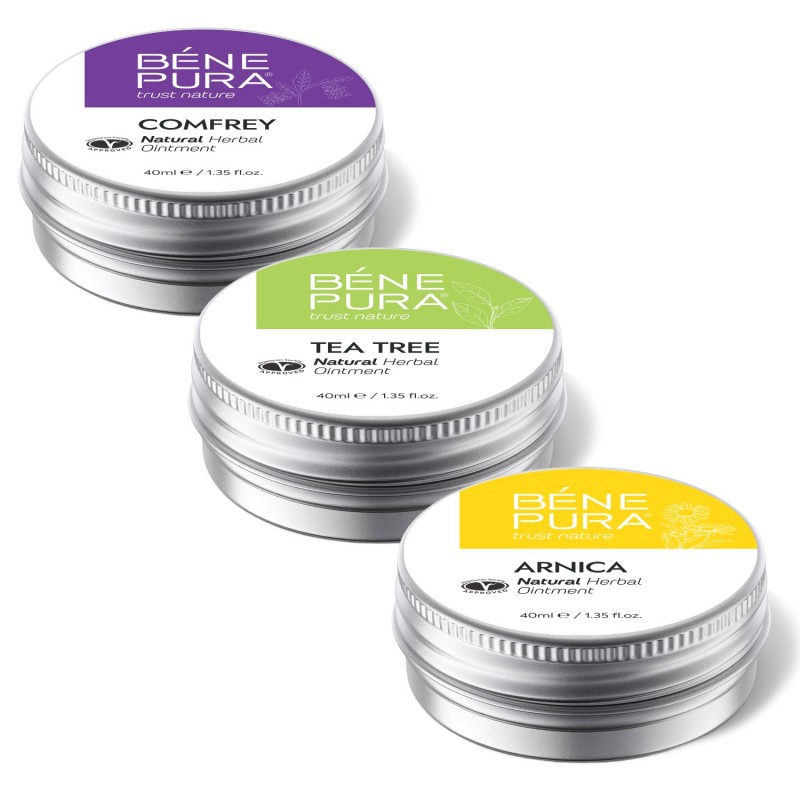The Healing Properties of Comfrey: How to Use it Safely
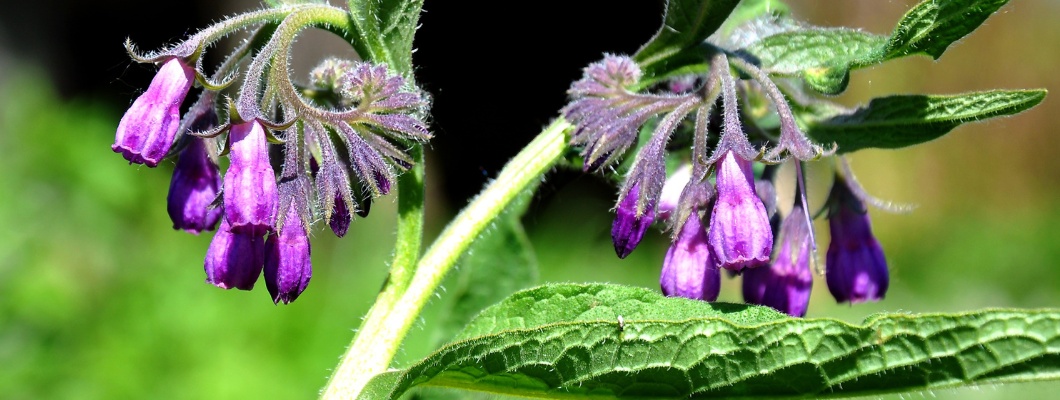
Comfrey (Symphytum officinale) is one of the most ancient and valuable herbs used in natural medicine. It is known for its incredible healing properties that help the body recover faster and maintain good health. It is used to treat wounds, inflammations and bone injuries.
Its power lies in its rich chemical composition, which includes allantoin, tannins, mucilagins and other active substances.
In this article, we will take a detailed look at the benefits of Comfrey and why it deserves a place in every home medicine cabinet.
Table of Contents
1. What is Comfrey?
Comfrey is a plant with a long history and extraordinary properties. Its Latin name, "Symphytum," comes from the Greek word "symphyo," which means "to grow together" or "to restore." This indicates that even in ancient times, people recognized its beneficial effects on regeneration and healing.
Comfrey:
- Is resistant to adverse conditions and can survive in various environments;
- Its leaves are large, mossy and rich in allantoin - a key ingredient that stimulates cell regeneration and rejuvenates tissues;
- Improves soil condition - fallen leaves decompose quickly and enrich the soil with nutrients, making it an ideal plant for natural fertilization;
- In the past, it was also called "bone herb" because of its ability to help with fractures and injuries.
2. Benefits of Comfrey for Joints and Muscles
One of the most well-known benefits of Comfrey is its ability to relieve pain and inflammation in the joints and muscles. It contains active ingredients that penetrate deep into the tissues and provide fast relief.
Comfrey can help by:
Stimulating blood circulation
Topical application of Comfrey improves blood flow to the affected area, which speeds up the healing process. This is especially helpful for muscle spasms and chronic inflammation.
Reducing stiffness
Comfrey is effective for morning joint stiffness caused by arthritis or other diseases.
Preventing inflammation
The active ingredients in Comfrey have antioxidant properties that protect cells from damage and help reduce chronic inflammation.
Calming the nervous system
Applying a compress or ointment with Comfrey can have a relaxing effect, which is especially helpful for muscle pain.
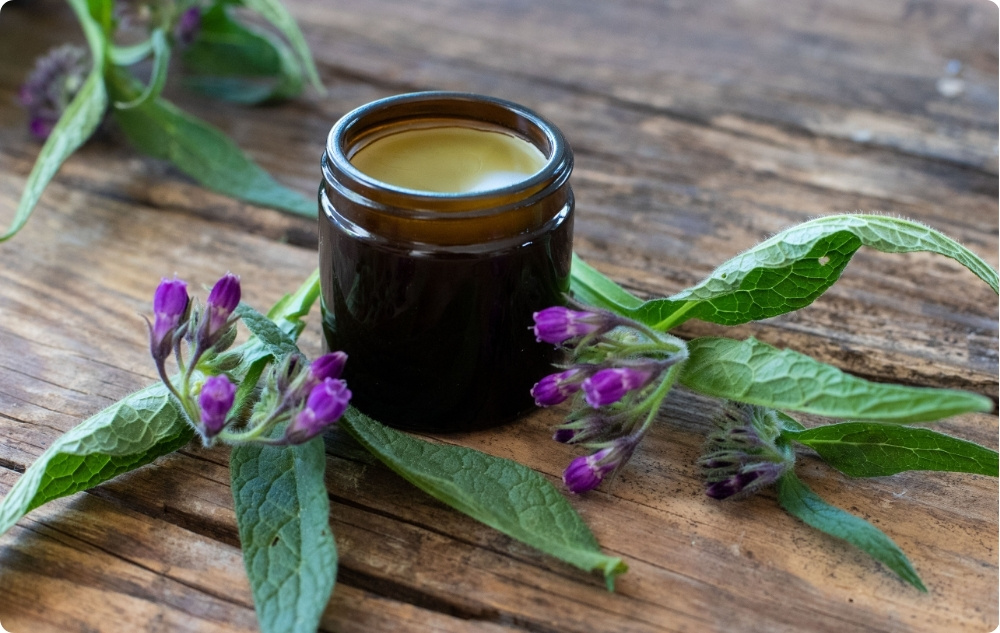
Comfrey is suitable for active athletes and people with physically demanding jobs. It helps the body adapt to intense exercise and speeds up recovery after workouts.
It is important to note that Comfrey can also be included as part of physical therapy treatments. Combining it with massage or heat therapy can increase the benefits and speed up the recovery of joints and muscles after injury.
3. Benefits of Comfrey for Bones
Comfrey is indispensable in maintaining healthy bones. It not only helps in the healing of bone injuries, but also strengthens bones in the long term.
1. Relieves inflammation in bone tissue
Compresses with Comfrey can reduce swelling and pain from osteomyelitis (bone tissue infection) or chronic inflammatory diseases.
2. Helps with cartilage wear and tear
Comfrey is beneficial not only for the bones themselves, but also for cartilage tissues. Its active ingredients strengthen connective tissues and improve their elasticity, protecting joints from wear and tear.
The benefits of Comfrey for bones make it suitable for:
- Elderly people at risk of developing osteoporosis;
- Athletes who suffer from stress fractures and chronic injuries;
- People in the postoperative period after bone related surgical procedures;
- Patients with inflammatory diseases of the bones and joints.
Comfrey is extremely useful in rehabilitation after fractures, sprains, and other injuries.
4. Benefits of Comfrey for The Skin
Comfrey offers numerous benefits for skin health and beauty, thanks to its rich composition and soothing properties.
Reduces scars
Thanks to the regenerative properties of allantoin and other active ingredients, Comfrey can help reduce the visibility of scars. This makes it suitable for use after surgeries or injuries.
Heals wounds, abrasions and burns
The allantoin in Comfrey stimulates cell regeneration, making it effective for treating minor cuts, scrapes, and burns. Regular use of Comfrey creams or ointments can significantly reduce healing time.

Has anti-inflammatory effects
Comfrey contains rosmarinic acid, which has a powerful anti-inflammatory effect, making it suitable for soothing skin irritations such as eczema, dermatitis, and rashes.
Has antibacterial effects
Its antibacterial properties help with skin infections by preventing the spread of bacteria and other microorganisms.
5. Can Comfrey be Consumed Orally?
In the past, Comfrey was widely used as an internal remedy to treat various health problems. In folk medicine it has been used for:
- Ulcers;
- Cough;
- Stomach issues.
Today, the consumption of Comfrey is highly restricted and even banned in many countries. The reason for this is the pyrrolizidine alkaloids (PA) found in the plant, which can be toxic to the liver.
Side effects of consuming Comfrey
Comfrey is a plant with proven medicinal properties, but its internal use carries significant risks. Consuming Comfrey can lead to a number of adverse health effects, especially with prolonged or improper use.
The side effects of consuming Comfrey lead to:
1. Liver toxicity
- Veno-occlusive disease: Alkaloids damage the blood vessels in the liver, causing them to narrow or block. This disrupts blood flow and causes serious damage;
- Acute liver failure: In severe cases, the liver stops functioning effectively, which can be life-threatening;
- Chronic damage: Even small doses taken regularly can lead to a buildup of toxins and gradual liver damage.
2. Digestive system disorder
- Nausea and vomiting: These symptoms may occur in the early stages of intoxication;
- Abdominal pain: Liver damage is often accompanied by pain in the upper right abdomen;
- Diarrhea: The toxic substances in the plant can irritate the lining of the digestive tract.
3. Damage to other organs
- Kidneys: High levels of toxins can lead to kidney failure;
- Cardiovascular system: Narrowing of blood vessels in the liver can increase the strain on the heart.
4. Allergic reactions
- Skin rashes: In rare cases, even with internal use, redness or itching may occur;
- Respiratory problems: In case of hypersensitivity to the plant, shortness of breath or coughing may develop.
6. How to use Comfrey Safely?
Comfrey is a plant with many benefits, but its proper use requires attention and responsibility. It is important to know how to apply it safely to avoid unwanted side effects.
Here are some tips and recommendations for safe use of Comfrey:
1. Homemade recipes with Comfrey
Homemade recipes with Comfrey should be used with caution. It is best to limit them to external use.
How to prepare an infusion for a compress?
- Take dried leaves or root from Comfrey;
- Pour hot water over them and let them steep for 10-15 minutes;
- Strain the liquid and use the infusion as a compress on the skin.
How to prepare a homemade ointment with Comfrey?
- Mix dried leaves or root with beeswax and a carrier oil;
- Heat the mixture in a water bath until the wax melts;
- Strain and pour into a sterile container;
- Use the ointment externally only.
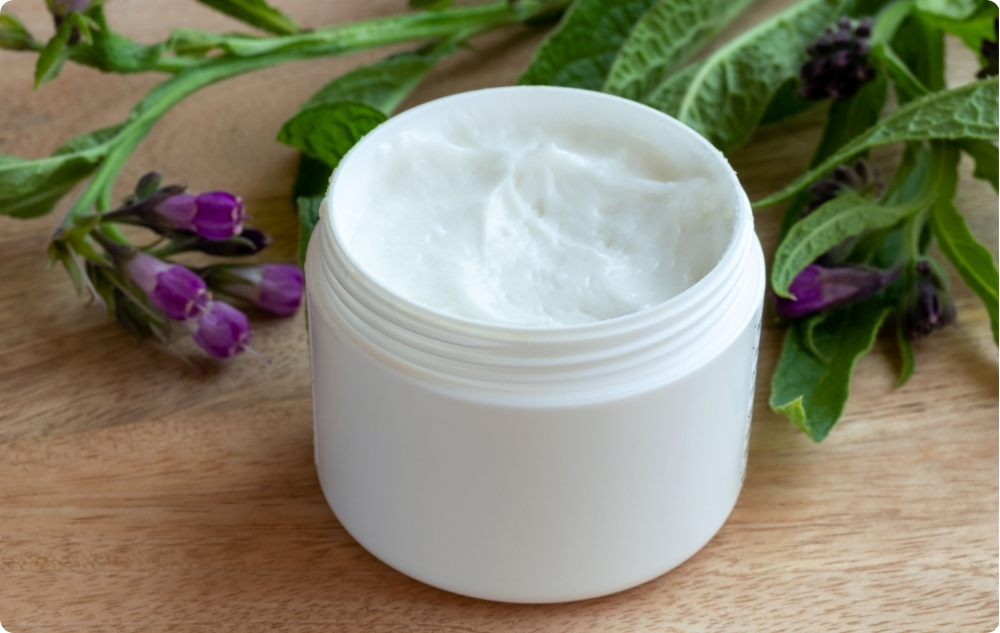
2. Tips for safe use
- Limit the duration of use - use Comfrey products for a maximum of 10-14 days. Prolonged use, even external, can lead to an accumulation of alkaloids in the body;
- Avoid contact with open wounds - Comfrey stimulates cell growth, which can lead to premature closure of wounds without fully healing the inner layers;
- Storage - the fresh plant should be stored in a dry and ventilated place. Comfrey products should be well closed and protected from moisture.
3. Who should not use Comfrey?
- Pregnant and breastfeeding women;
- People with liver problems;
- Children under 12 years of age;
- People with sensitive skin.
7. Conclusion
Comfrey is a plant with a long and impressive history of use in traditional medicine, known for its regenerative and anti-inflammatory properties. Despite its numerous benefits for joints, muscles and skin, modern research highlights the importance of its responsible use.
External use is safe and effective when applied properly, while internal use carries serious health risks.
SOURCES:
1. Healthline: What Is Comfrey? (21.01.2025)
2. WebMD: Comfrey - Uses, Side Effects, and More (21.01.2025)

